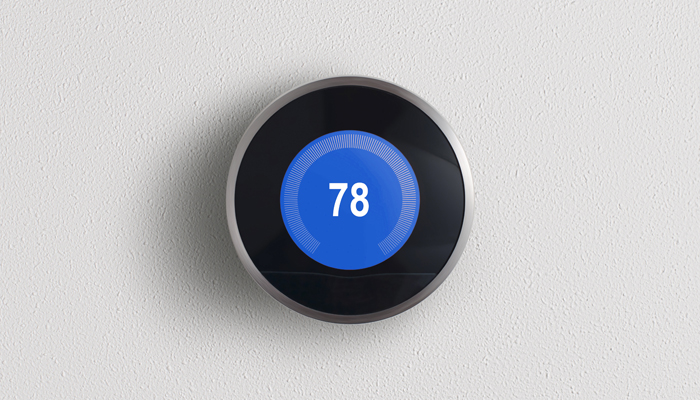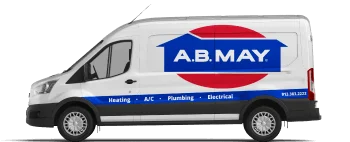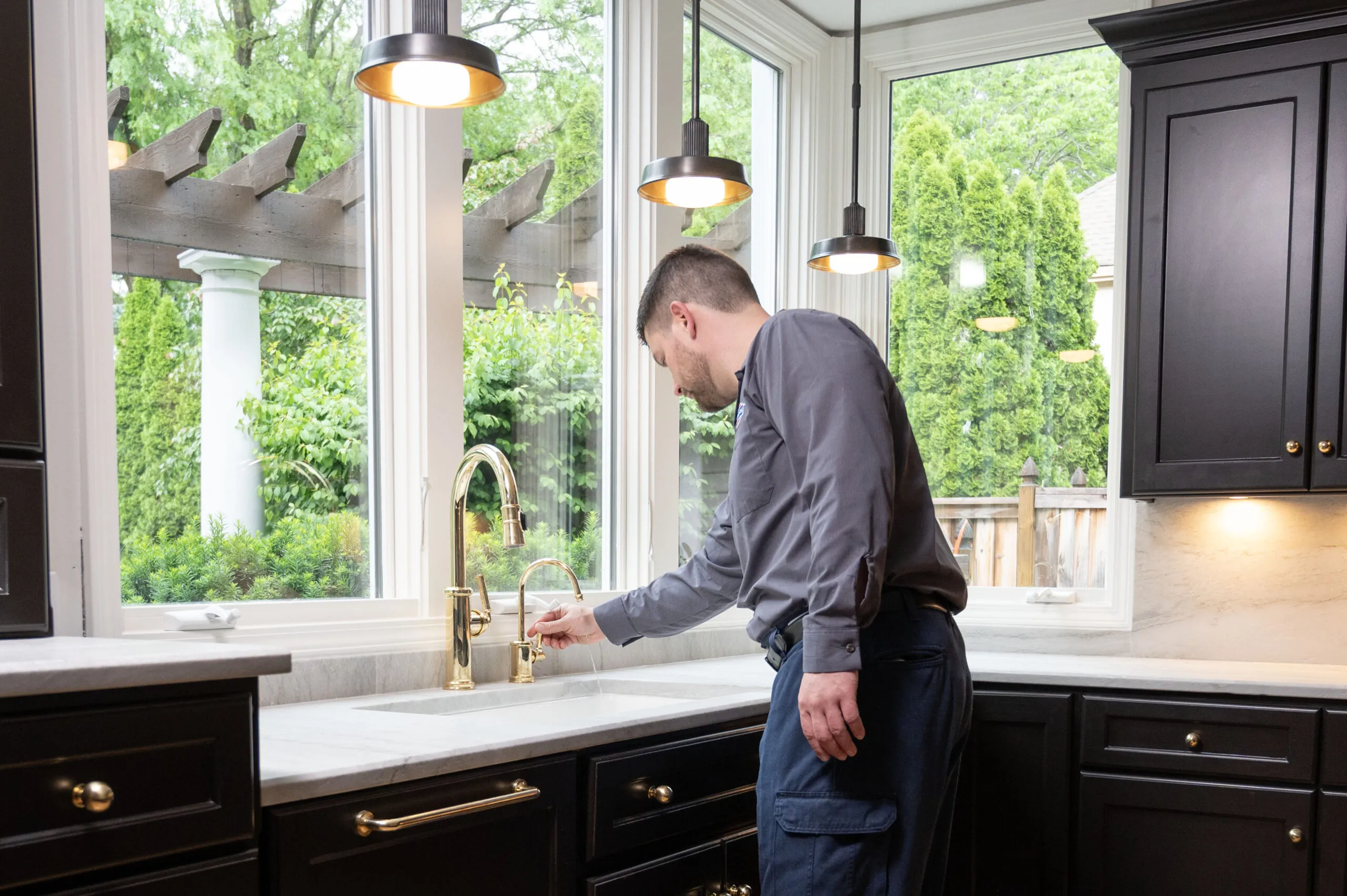What is the Ideal Home Temperature?

People ask us year-round what is the best temperature for your home. While every home is unique, homeowners can save money while staying comfortable at home. Here is a guide to help you choose the best temperature for your home, what to do when you leave town, and strategies to maximize comfort.
When we experience extreme weather, it can be tempting to crank the thermostat up or down. While it may seem like a good idea at the time, the constant change in temperature can cause your energy bills to skyrocket. Truthfully, you don’t need to pay extra in order to be comfortable in your home.
Maximize energy savings with your thermostat
To save the most energy, the trick is to create as little difference between outdoor and indoor temperatures as possible while maintaining comfort. The U.S. Department of Energy recommends using a programmable thermostat and setting it closer to outside temperatures, around 78 degrees in summer and 68 in the winter. That might seem too warm or cold, but keep reading to learn about tactics to reduce the need for more heat or air conditioning in your home. At the end of the day, the best temperature for your home is the one that works best for you, your family, and your budget.
Install a smart thermostat. Smart thermostats are a homeowner’s best friend, especially when it comes to convenience and energy savings. Smart thermostats, like the Nest or Ecobee, keep track of your habits and automatically adjust to meet your needs. Also, they can be managed from an app, so you can keep an eye on the temperature while at the office or on vacation.
What’s the best home temperature when you are away or on vacation?
Use nighttime and away settings. Adjusting your thermostat strategically can save up to 10% off your monthly bill. While changing the temperature too often can cause your bills to rise, a smart approach to temperature can save you thousands in the long run.
Adjust your thermostat seven to ten degrees when gone for 8 hours or more. For instance, while you are away at work, lower your thermostat seven to ten degrees. When you arrive home, adjust it to a comfortable temperature (or if you have a smart thermostat, you can set it from your desk!).
An easy way to save money when leaving town is to adjust your thermostat by seven to ten degrees and make sure to remove any timers or settings that would automatically shift the temperature. In the winter, remember that most pets will stay safe and comfortable at 64 degrees, and most houseplants need to stay about 60 degrees. To avoid frozen pipes, make sure it doesn’t get colder than 50-55 degrees.
Resist the urge to turn the system off completely. Turning it off completely increases the risk of burst pipes in the winter and mold and mildew growth in the summer. It is best to keep your HVAC system on at all times and adjust the thermostat when you are away. If you have a programmable thermostat, it may have a “vacation” mode that makes it even easier to use.
Tactics to Keep the Best Temperature for Your Home in Summer or Winter
These are strategies to increase comfort while you are trying to save energy. Every home is unique, and it’s important to understand how you use your home and what’s most important to you when making decisions about home comfort. Our professional technicians always take the time to answer any questions you have and help you understand your home systems so you can find your perfect balance between comfort and energy savings. Here are some strategies to consider:
Summer Months
For maximum savings and ultimate comfort, the U.S. Department of Energy recommends setting your thermostat to 78 degrees. While that may seem high, there are extra steps you can take to cool down your home:
- Install a dehumidifier, which will make your home feel significantly cooler by removing humidity from the air. Air conditioners remove heat and humidity from indoor air to help you feel cooler. Then, they send the unwanted heat and moisture outside and circulate the cooled air indoors. Sometimes the humidity is too much for the air conditioner to handle alone. This forces your air conditioner to work harder to keep up, costing you more money. Adding a dehumidifier will help the AC unit, make your home feel significantly cooler, and improve air quality.
- Close blinds and drapes to block sunlight and consider other passive energy saving strategies. Even the color of the house paint or siding material affects the warmth it attracts.
- Install ceiling fans or stand-alone fans to increase air circulation. In summer, ceiling fans should be counterclockwise to create a cooling downdraft. During the winter, change the direction to clockwise to help circulate the warm air that’s risen to the ceiling down along the walls.
- Caulk around doors and windows to ensure they are sealed.
- Install weatherstripping to keep hot air out.
- It may be time to upgrade your cooling system and replace it with a high-efficiency model. You can read more about that here.
Winter Months
It will vary depending on the age of your home and the efficiency of your system; we suggest you keep your thermostat between 68 and 72 degrees.
- Install weatherstripping to keep the chill out and the heat in.
- Invest in an electric blanket, which will keep you warm during cold nights.
- Install a humidifier. Winter air can be incredibly cold. Many Kansas City homes have less than 20 percent humidity during winter months. That kind of dryness can cause problems for your skin and respiratory systems. It is also hard on any woodwork you have and makes your home feel colder than the actual temperature. Adding some humidity back into your air will increase comfort without making your furnace work harder. Humidity traps the warm air and keeps your home warmer for longer.
- Update insulation. Warm air will escape quickly without proper insulation, causing your energy bills to increase.
How to Lower Energy Bills Any Time of the Year
Smart Thermostats Smart thermostats are a homeowner’s best friend, especially when it comes to convenience and energy savings. Smart thermostats, like the Nest, keep track of your habits and automatically adjust to meet your needs. Also, the Nest can be controlled from an app, so you can keep an eye on the temperature while at the office or on vacation.
Schedule annual System Check appointments. Regular maintenance is one of the best ways to ensure your system isn’t working any harder than necessary to keep your home comfortable. Replacing your air filter regularly also saves energy.
Deep clean your ducts. Finally, if your ductwork contains lots of dust or debris like insect or critter material, you might want to take advantage of A.B. May’s duct cleaning services. You’ll improve the airflow of your heating and air system and your indoor air quality.
Call A.B. May for Comfort All Year Long
Whether you need assistance with insulation, ductwork, thermostats, or heating or air conditioning equipment, our professional A.B. May technicians can help. If you think you’re ready for an air conditioning upgrade, we represent quality products. Want to know more? Contact us for a free estimate or schedule service.
Request Service
Fill out the form below, and we’ll contact you shortly to schedule your home service appointment.





